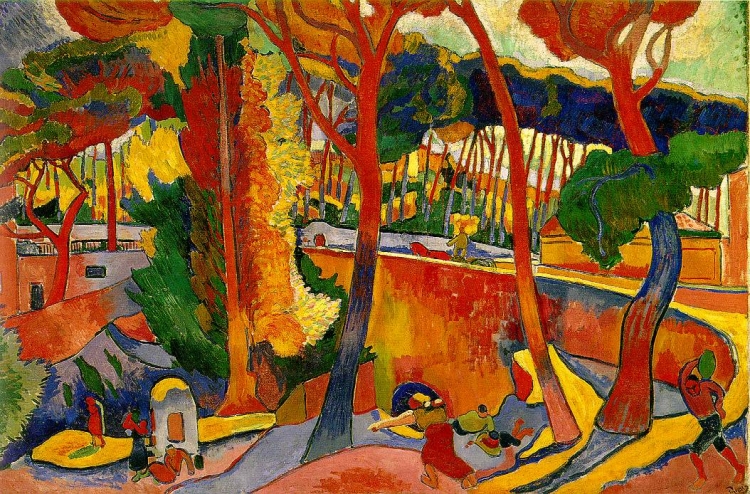Review: André Derain, La Décennie Radicale

White walls contrast landscapes draped in heavy brushstrokes of green, red, and yellow; in this quiet space, the bold combination of colors speak for themselves. Red trees transform into city-scapes, as Big Ben finds itself highlighted in salmon pink and oil paint displays the glimmer of the Thames. Suddenly, nude tones and triangles skew the previous trend of representative work, recalling the work of Picasso. Triangles soon become portraits, as the exhibit leads us further. The last wall is dominated by a work filled with tigers and undefined human figures, dancing against a subtle background of nature in the dark. This is André Derain, a 19th Century Fauvist pioneer whose exhibit La Décennie Radicale was just unveiled at the Pompidou this month.
Image Credit: Flickr/ Renaud Camus
In the early 1900's, Derain—together with Matisse—created a new art form: Fauvism. After taking representational aspects from impressionism, Derain and Matisse created this style invoking strong usage of color and heavy brushstrokes to represent mainly landscape and portraiture. This is extremely evident throughout the first half of the exhibition, as ‘unexpected’ colors were used to represent nature and cityscapes.
Image Credit: Lily Radziemski
As the exhibit progresses, we see the evolution of Derain’s work from Fauvism to Cubism. Suddenly, bold colors fade into neutral tones, which marks a surprising turn in the second half of the exposition. As the show began with a bang, the bang begins to fizzle; since Derain’s colors were so unique, their fading marked a confusion about what was to come.
Following the Cubist turn of events, Derain’s style continues to take unexpected turns. Portraits begin to resemble the style of Modigliani, as we are left wondering where and when the bold brushstrokes and colors were lost.
Image Credit: Flickr/ Sharon Mollerus
The constant evolvement of styles throughout the exhibition was fascinating. Gertrude Stein said that Derain was ‘half genius and half dilettante,’ referring to his position as a revolutionary painter that—towards the end of his career—begins to lose focus on the original avant-garde style of his work.
The constant switching between Derain’s styles was as confusing as it was exciting. After every turn, a new style was revealed; despite the initial disappointment of losing Derain’s original element of bold color, the exhibition turned into an exciting game of what’s to come. Derain’s unexpected progression through different styles and art forms is what makes La Décennie Radicale a must-see this fall.
When: 4 October 2017 - 29 January 2018
Where: Centre Pompidou, Place Georges Pompidou, 75004 Paris
Hours: Every day, 11am-9pm (Closed on Tuesdays)









